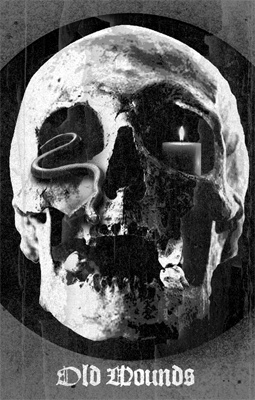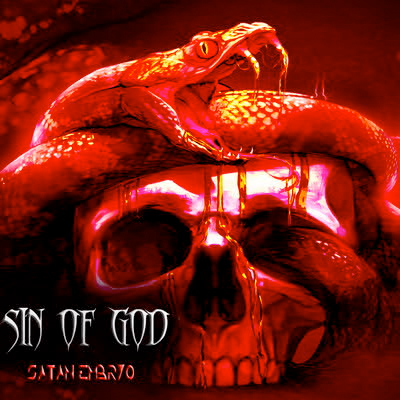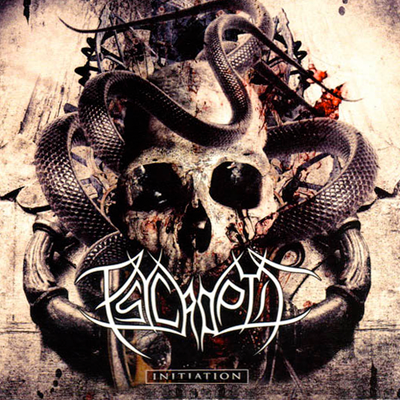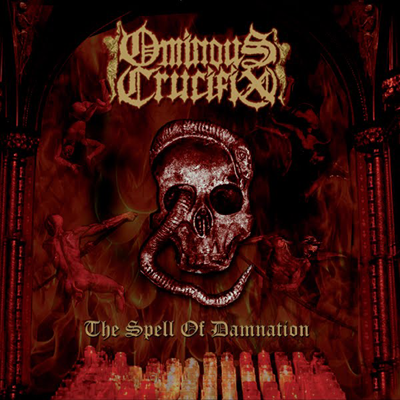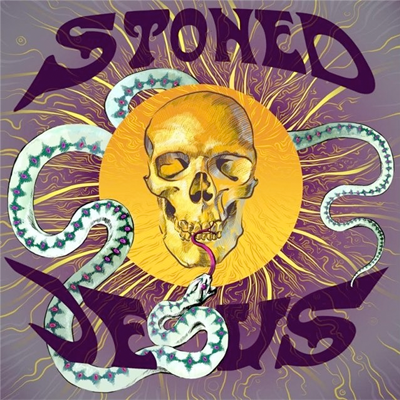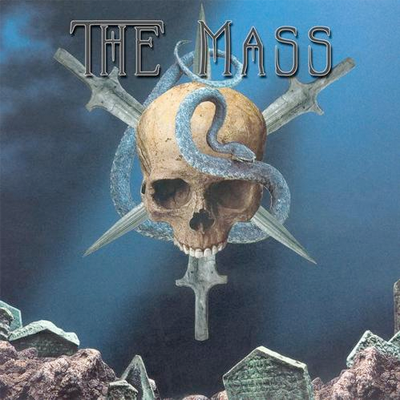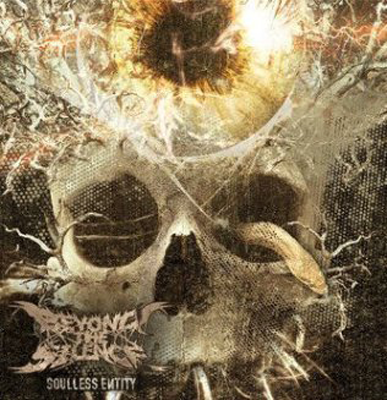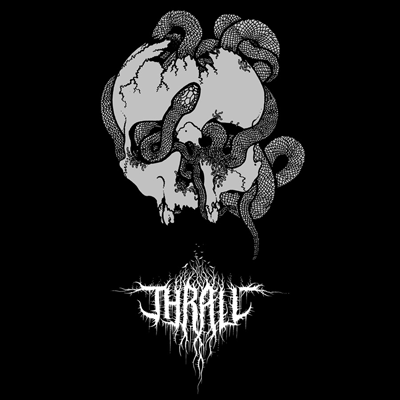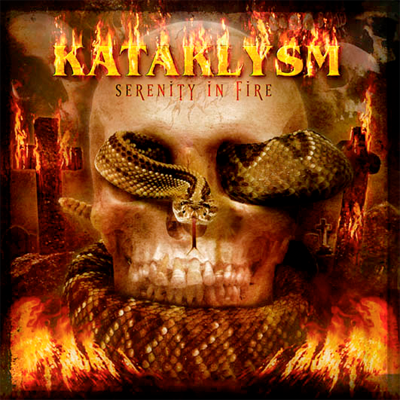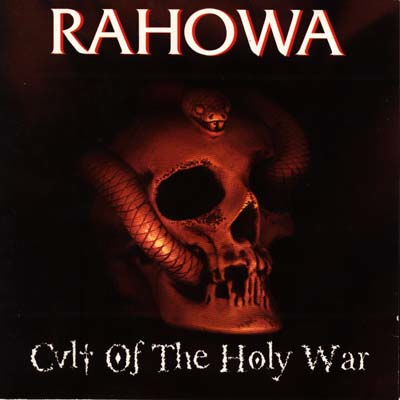
RAHOWA, Cult of the Holy War (1995, Resistance)
The skull:
I was sitting around on the 4th floor of the Big Dumb Skulls compound, chatting it up with a spokesperson for the Council, when we both realized it had been too long since we’d enjoyed a skull with a snake weaving in and out of it. Could it be that we last saw it with Skull149 (Kataklysm)? Then we started talking about the old days, all the way back to Skull4 (Sword). Then we opened our eleventh bottles of some strong Belgian ale and marveled at this cover, the mighty Skull418, which has that slightly pornographic motif we were looking for: a skull penetrated in several holes at the same time by one mean looking serpent. Then the spokesperson started sobbing uncontrollably about how much he wishes the Council would come around on the S.O.D. Speak English or Die skull (currently in the rejected pile) and then I blacked out.
The music:
I remember all the controversy about this band (and label, and magazine) back in the mid ’90s, but avoided the music because there’s even less great white supremacist metal out there than great Christian metal. But I also remember hearing that this album was a “masterpiece,” something that even people outside the band’s political realm were claiming. I still didn’t check it out, but noted the reverence. Now that all’s said and done with Rahowa, I feel okay listening to this album via Youtube. The first thing that strikes me are the vocals. They vary from clean folk-ish choir vocals to gruff, semi-sung passages that recall the worst of Tim from Pyogenesis (a band I have much affection for, despite Tim’s occasional silliness). In fact, many moments in Cult of the Holy War remind of Sweet X-Rated Nothings, or maybe those Cemetary albums when the band was steering its death metal into more gothic areas. I even hear that orchestral/gothic post-metal feel of mid ’90s Tiamat and Paradise Lost in spots. Another way to frame what Rahowa’s doing is to call it “post-Bloody Kisses” (look no further than “Hall of the Heroes” and “The Last Battalion” for two particularly blatant Type O Negative ripoffs). There’s also a strong presence of gang chants and a decidedly folky flavor to the music, which probably provides a link to Rahowa’s Oi! roots and might appeal to people who like junk like Korpiklaani, but what the hell do I know about Oi! or Korpiklaani? Not much! Lyrically it’s obsessed with the idea of white power, making Cult of the Holy War the least-angry metal album of its type, at least that I’ve heard. Despite the fact that their philosophy is fucked, I appreciate the sensitivity they show on something like ballad “In the Fires of 1945.” Some of this is positively upbeat, and hey, I guess there’s something to be said for not giving a worse name to white power bands. Ultimately there’s a ton of variety here, and some of it is even truly good, although the bad stuff is hilariously bad (“Anvil of Crom” = Manowar circa Gods of War). For every good moment there’s a shoddy off-key vocal or some clunky rhythm that makes you wish they’d used a drum machine. And really, this is no masterpiece. It is, in fact, for all its ambition, quite a mess. Too many ideas, too many directions, too many cooks, really, without the ability to tie it all together cohesively. There’s a serious lack of self-editing skill here, too, as if every single idea they had for the album went onto the album. The white power thing is something band leader (and founder of the Resistance label and magazine) George Eric Hawthorne completely turned away from and now denounces. Apparently he’s now in a band with Jewish and black people called Novacosm, and good for him. Hopefully the music’s better than what’s on offer within Cult of the Holy War, but this at least has several interesting moments.
— Friar Wagner
